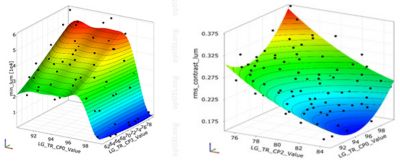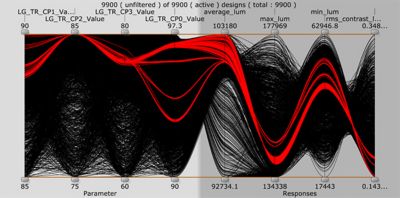-
-
Software gratuito per studenti
Ansys potenzia la nuova generazione di ingegneri
Gli studenti hanno accesso gratuito a software di simulazione di livello mondiale.
-
Connettiti subito con Ansys!
Progetta il tuo futuro
Connettiti a Ansys per scoprire come la simulazione può potenziare la tua prossima innovazione.
Paesi e regioni
Customer Center
Supporto
Partner Community
Contatta l'ufficio vendite
Per Stati Uniti e Canada
Accedi
Prove Gratuite
Prodotti & Servizi
Scopri
Chi Siamo
Back
Prodotti & Servizi
Back
Scopri
Ansys potenzia la nuova generazione di ingegneri
Gli studenti hanno accesso gratuito a software di simulazione di livello mondiale.
Back
Chi Siamo
Progetta il tuo futuro
Connettiti a Ansys per scoprire come la simulazione può potenziare la tua prossima innovazione.
Customer Center
Supporto
Partner Community
Contatta l'ufficio vendite
Per Stati Uniti e Canada
Accedi
Prove Gratuite
ANSYS BLOG
September 4, 2020
Perform Efficient and Robust Design Optimization of Optical Systems
The optimization of advanced optical designs is challenging because of their complexity and nonlinearity. The huge number of input parameters and their interactions add to the complexity. In addition, the demands for optical system performance are many, especially when optimization and robustness criteria are included.
If those challenges weren’t enough, new developments, like advanced materials, innovative manufacturing techniques and short product development times require advanced methodologies to develop competitive optical products.
A Robust Design Optimization Approach for Optical Design
To streamline optical design, Ansys OptiSLang supports the entire virtual product development process, including:
- Process integration, building workflows (e.g. coupling several physical domains) and their automation
- Robust design optimization
This notion of robust design optimization starts with coupling computer-aided engineering (CAE) and measurement data to understand the design. This consists of investigating parameter sensitivities, reducing complexity and generating the best possible metamodels from CAE data. Optimization also includes model calibration using measurement data to identify important model parameters for the best fit between simulation and measurement.
Beginning optimization with design understanding and adding model calibration improves designs by optimizing performance. To complete the process, these steps are followed by the testing of design quality to ensure design robustness and reliability.
Through a sensitivity analysis, you can understand the most important input variables. An automatic workflow, with a minimum of solver runs, enables you to:
- Identify the important parameters for each response
- Generate the best possible metamodel for each response
- Understand and reduce the optimization task
- Check solver and extraction noise
How does this process apply to optical simulation? Ansys optiSLang is integrated with Ansys Speos, and each application is available in one click from their respective workbenches. They can also be directly integrated via scripts.
Optical Design Optimization Example: Automotive Lightguide
Now, let’s look at an example of design optimization. A lightguide for an automotive headlamp enables the design of contours and illuminated signatures that are easily distinguishable, thus providing brand recognition. The goal is to obtain a homogeneous lit appearance while maximizing average luminance and minimizing root mean square (RMS) contrast. Of course, we want to do all of this as quickly as possible and with the least amount of iterations.
Lightguide parametrization to minimize RMS contrast and maximize average luminance
Engineering teams provide input parameters for the optical systems, like the trimming ratio and the desired outputs (the maximum luminance or the RMS contrast, for instance). The sensitivity analysis then allows us to understand the most important input variables. The optimization process samples and computes hundreds of designs on a metamodel, considering the critical parameters in priority. The analysis results may show, for instance, that the minimum luminance is mainly affected by the trimming ratio in certain points, and that the RMS contrast is mainly affected by the trimming ratio at other points. This workflow makes the optimization much more efficient and direct.
Sensitivity analysis results
Pareto Design Optimization Enables Fast Decision Making
Systems can be optimized with a reduced subset of important parameters, perform a pre-optimization on metamodels, and then an optimization with leading-edge optimization algorithms. A decision tree guides you to the best choice of optimization algorithms, so you can easily visualize objectives using designs from the sensitivity analysis and make a trade-off between RMS contrast and average luminance to perform a Pareto optimization.
Analysis of the Pareto front designs with Parallel Coordinates Plot
Design decisions, like the trimming ratio inputs to increase the average luminance are easier and faster to make with Pareto optimization. Pareto optimization on a metamodel is an extremely fast process as no Speos computation is needed here, only the response of the model is used. The Pareto front designs illustrate trade-offs among the objectives, so that the best design can be chosen from the Pareto front, validated with Speos and, if necessary, used as a starting point for further optimization with Speos.
Learn more about the virtual product development and optical design optimization with Speos and optiSLang in this webinar.



